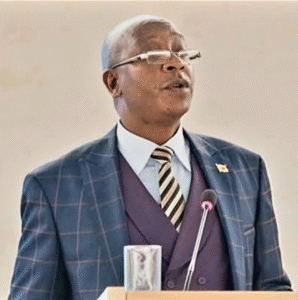STATE MEDIA UNDER FIRE: CALLS TO NAME ALLEGED CORRUPT JOURNALISTS INTENSIFY
In a recent development that has sparked intense debate and controversy, The Herald, a state-controlled daily, and government spokesman Nick Mangwana find themselves in a precarious situation. Their claims of two journalists attempting to extort money from a foreign diplomat using a fabricated story have raised more questions than answers.
The case hinges on an allegation that these unnamed senior journalists coerced a European diplomat into paying a substantial bribe. The supposed threat was the publication of a completely fabricated story, aiming to tarnish the diplomat’s reputation unless a ‘mutually beneficial agreement’ was reached. This explosive report, as published in The Herald, has since become a focal point of heated discussions among media circles and the public.
The irony of this situation is palpable. While the exposure of corrupt journalists is generally seen as a positive move towards transparency and integrity in journalism, the current scenario begs a critical question. Why are The Herald and Mangwana, who have access to this information and evidence, choosing to protect the identities of these journalists? This protective stance undermines the very essence of the exposé and leads to skepticism about the authenticity of the claims.
The public’s response has been one of frustration and suspicion. If The Herald and Mangwana are aware of the journalists’ identities yet refrain from disclosing them, the legitimacy and purpose of the story are called into question. This lack of transparency has led to an outcry for accountability and truth.
Prominent filmmaking journalist Hopewell Chin’ono has been vocal in his criticism. Addressing Mangwana directly, he questioned the rationale behind shielding the journalists if they indeed engaged in corrupt practices. Chin’ono highlighted a potential inconsistency in the government’s approach, noting that if the incident had genuinely occurred, it would have likely been widely publicized across all state media platforms. His skepticism is shared by many who view the story as potentially fabricated, or ‘fake news,’ until concrete evidence or names are presented.
Chin’ono’s remarks underscore a significant concern: the potential misuse of media for propagating unverified or false information. The absence of names and concrete evidence in The Herald’s report lends itself to interpretations of ‘dog whistle reporting,’ where the real information is hidden, leaving the public in the dark.
Now, the responsibility falls squarely on the shoulders of The Herald and Mangwana. To uphold journalistic integrity and regain public trust, they must either name the implicated journalists or provide substantial evidence supporting their claims. This action is not just about addressing this specific incident; it’s about reinforcing the principles of transparency and accountability in journalism.
As the situation unfolds, the public’s demand for clarity and truth only grows stronger. The credibility of state media and government spokespeople is at stake, and the resolution of this controversy will set a precedent for how such cases are handled in the future.
In conclusion, the saga involving The Herald, Mangwana, and the unnamed journalists serves as a stark reminder of the delicate balance between responsible journalism and the pursuit of sensationalism. It highlights the critical need for transparency in media reporting and the ethical responsibility of journalists and government officials alike. The outcome of this case will be a defining moment for media integrity in the region.







